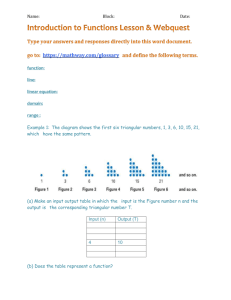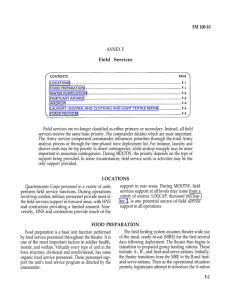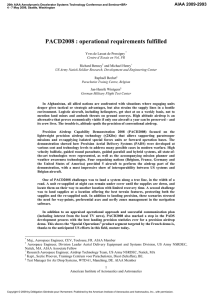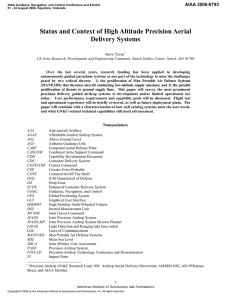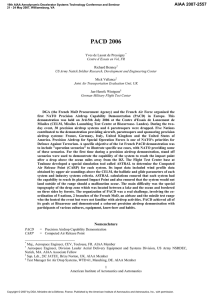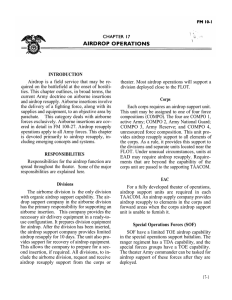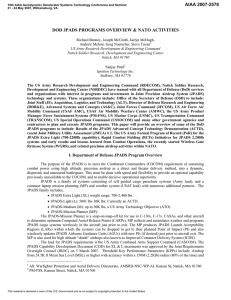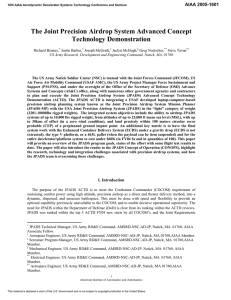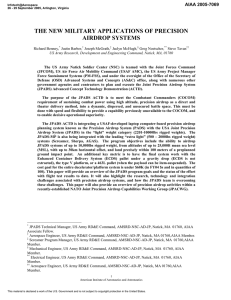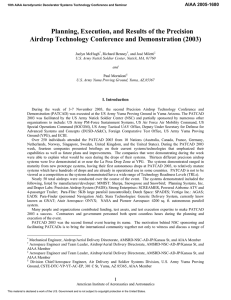FM 10-1 They signal several changes field services as they have
advertisement
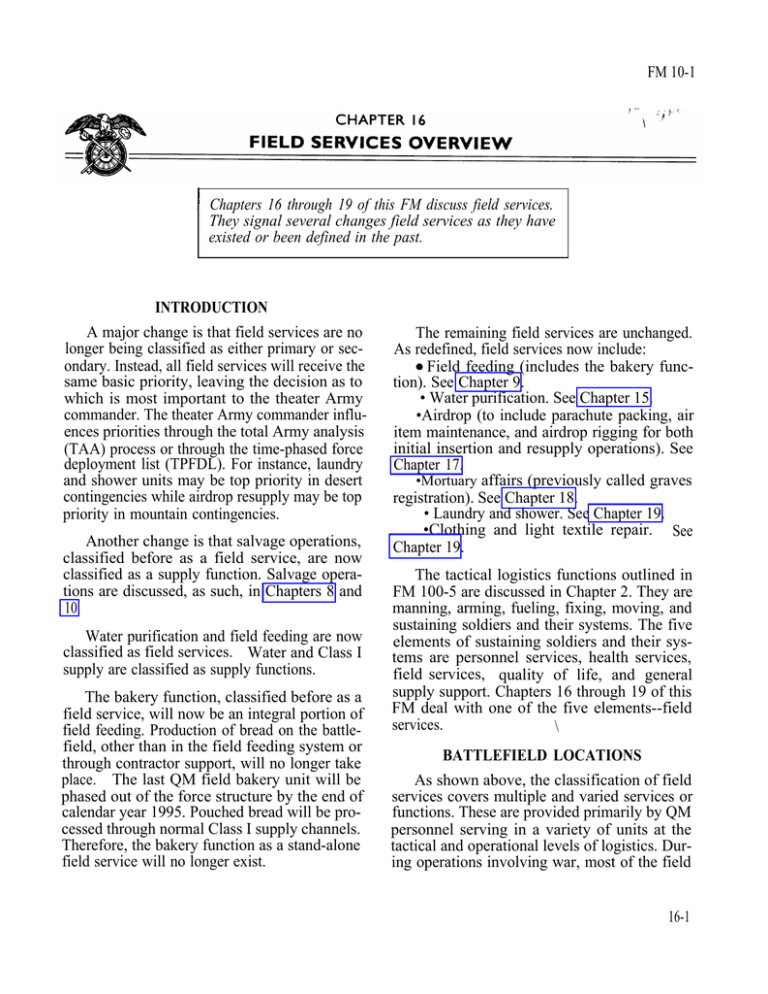
FM 10-1 Chapters 16 through 19 of this FM discuss field services. They signal several changes field services as they have existed or been defined in the past. INTRODUCTION A major change is that field services are no longer being classified as either primary or secondary. Instead, all field services will receive the same basic priority, leaving the decision as to which is most important to the theater Army commander. The theater Army commander influences priorities through the total Army analysis (TAA) process or through the time-phased force deployment list (TPFDL). For instance, laundry and shower units may be top priority in desert contingencies while airdrop resupply may be top priority in mountain contingencies. Another change is that salvage operations, classified before as a field service, are now classified as a supply function. Salvage operations are discussed, as such, in Chapters 8 and 10. Water purification and field feeding are now classified as field services. Water and Class I supply are classified as supply functions. The bakery function, classified before as a field service, will now be an integral portion of field feeding. Production of bread on the battlefield, other than in the field feeding system or through contractor support, will no longer take place. The last QM field bakery unit will be phased out of the force structure by the end of calendar year 1995. Pouched bread will be processed through normal Class I supply channels. Therefore, the bakery function as a stand-alone field service will no longer exist. The remaining field services are unchanged. As redefined, field services now include: Field feeding (includes the bakery function). See Chapter 9. • Water purification. See Chapter 15. •Airdrop (to include parachute packing, air item maintenance, and airdrop rigging for both initial insertion and resupply operations). See Chapter 17. •Mortuary affairs (previously called graves registration). See Chapter 18. • Laundry and shower. See Chapter 19. •Clothing and light textile repair. See Chapter 19. The tactical logistics functions outlined in FM 100-5 are discussed in Chapter 2. They are manning, arming, fueling, fixing, moving, and sustaining soldiers and their systems. The five elements of sustaining soldiers and their systems are personnel services, health services, field services, quality of life, and general supply support. Chapters 16 through 19 of this FM deal with one of the five elements--field services. \ BATTLEFIELD LOCATIONS As shown above, the classification of field services covers multiple and varied services or functions. These are provided primarily by QM personnel serving in a variety of units at the tactical and operational levels of logistics. During operations involving war, most of the field 16-1 FM 10-1 services support provided at the tactical level will be provided by military personnel, with only a limited amount being provided by HNS or contractors. Conversely, at the operational level most field services support will be provided by HNS or by contractors. During OOTW field services support at all levels may come from a variety of sources. Field feeding is a basic unit function performed by QM food service personnel throughout the theater of operations. Virtually every type of unit in the force structure, divisional and nondivisional, has some organic food service personnel. These personnel control the unit’s food service program as directed by the commander. Mortuary affairs personnel, on the other hand, are very limited. Each division will have a small mortuary affairs element (two to three personnel) organic to the DISCOM. They will train division personnel to perform initial search, recovery, identification, and evacuation of human remains. During hostilities, the mortuary affairs personnel organic to the division will operate the initial collection point--with the collection and return of the human remains remaining a basic unit function. This procedure will continue until the division is augmented with additional mortuary affairs personnel or a mortuary affairs unit. Nondivisional units at the tactical and operational levels will be supported on an area basis by a mortuary affairs unit assigned to the COSCOM or TAACOM. The airborne division is the only division with an organic airdrop support capability. The airborne division capability is designed primarily for preparing the division for the initial insertion into an operational area. Following insertion, the airborne division can provide its own airdrop resupply support for 10 days. At that time, the airborne division will receive its airdrop resupply support from a light airdrop supply company assigned to the COSCOM or a heavy airdrop supply company assigned to the TAACOM. DS laundry and shower support at the tactical level will be provided by a field service 16-2 company having the capability of sending small teams as far forward as desired by the supported commander. At the operational level, this support will be provided by a combination of field service companies, HNS, and contractors. A GS laundry capability will be provided by a laundry and renovation company assigned to the TAACOM. A limited capability for minor clothing repair resides in the field service company. A larger capability will exist in the laundry and renovation company. In addition, QM fabric repair specialists are organic to selected maintenance units for the repair of a variety of canvas and fabrics used on tactical vehicles. Water purification for the divisions is provided by elements organic to the DISCOM. Water purification for nondivisional elements at the tactical and operational levels is provided by the supply company (DS) on an area basis. These DS capabilities can normally provide the needed water. However, a GS capability, in the form of QM water purification detachments, will be necessary when operating in arid regions. Field services, other than field feeding and water purification, will be discussed in the following chapters. Field feeding was covered in Chapter 9. Water purification was covered in Chapter 15. RELATED DOCTRINE A number of publications expand on information contained in this chapter. Some of the major ones are shown in Table 16-1. Table 16-1. Publications related to this chapter
